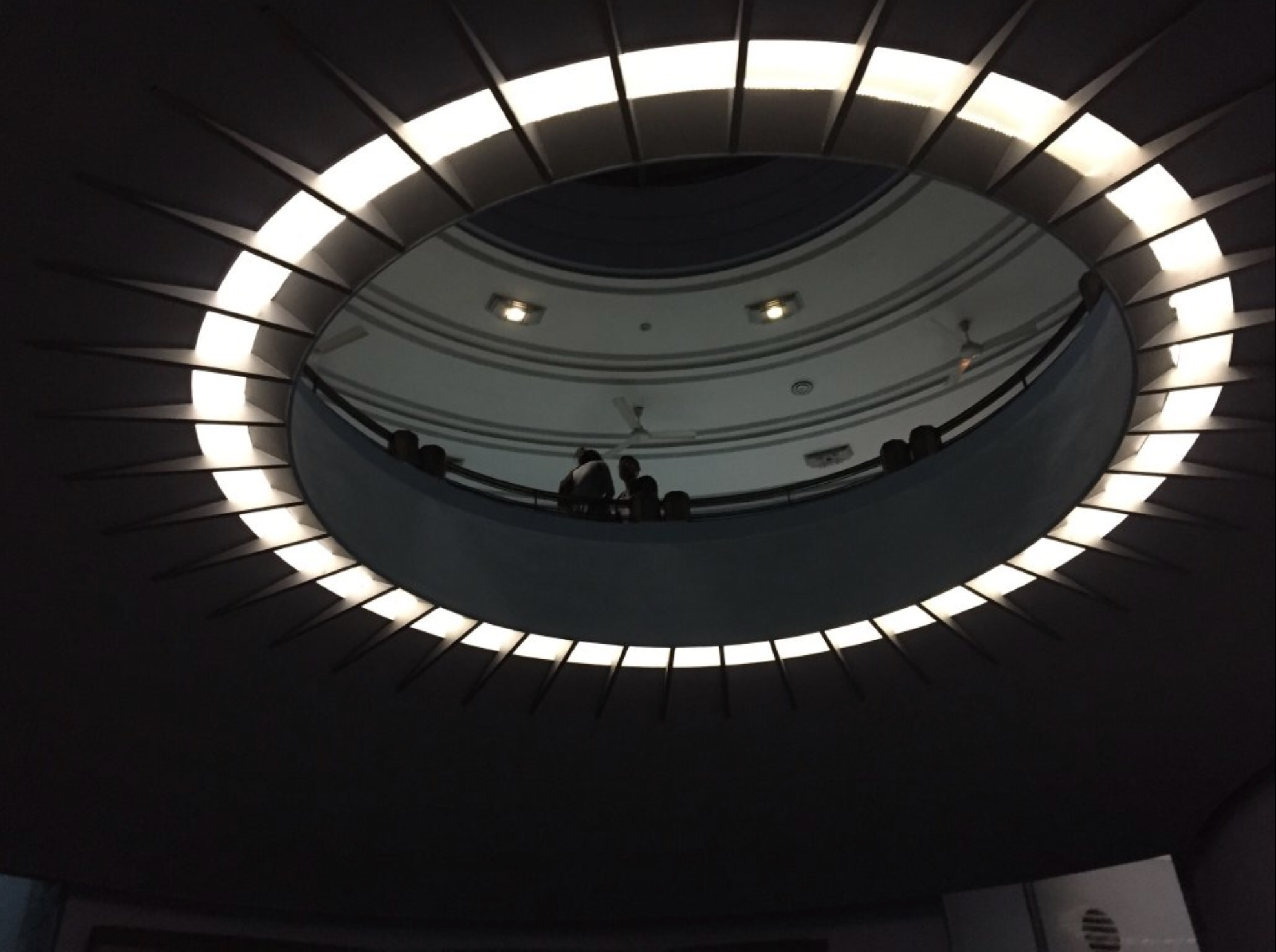Eros Cinema, Mumbai, India (1938)**
Artist/Designer:
Project Location: Mumbai, India





Style/Period(s):
Art Deco, Victorian
Primary Material(s):
Stone, Metal, Textile, Plaster, Wood, Light, Color
Function(s):
Theater
Related Website(s):
Significant Date(s):
20th Century, 1935, 1938
Additional Information:
Publications/Texts in Print:
Alff, Jon. “Art Deco: Gateway to Indian Modernism.” Architecture Plus Design Bombay 8, no. 6 (November 1, 1991): 57–64.
Dwivedi, Sharada, and Rahul Mehrotra. Bombay: TThe Cities Within. Bombay, India: Eminence Designs Pvt. Ltd., 2001.
Rajadhyaksha, Ashish. Indian Cinema in the Time of Celluloid: from Bollywood to the Emergency. Bloomington, IN: Indiana University Press, 2009.
Building Address: Cambata Building, 42, Maharshi Karve Rd, Churchgate, Mumbai, Maharashtra 400020, India
Significant Dates: Foundation 1935, Opened 1938, Closed 2016
Supporting Staff/ Designers: Architect Sohrabji Bhedwar, owner Eros Trust, Cambata Family
Tags: India, Cinema, Mumbai, Art Deco, Victorian, 20th Century, 1935, 1938, Stone, Metal, Textile, Plaster, Wood, Light, Color, Theater, Sohrabji Bhedwar, Eros Trust, Cambata Family, Fritz von Dreiberg, Red Agra Sandstone, Marble
This cinema used to be the most famous cinema hall in the city, it was frequented by famous and glamorous people back in the the day during the 1930-1990's. It had a seating capacity of 1204 people per show, , the construction of the structure took 2.5 years to complete. It was made with red agra sandstone and painted over with a cream coloured paint - It's architect was Sorabji Keikhushru Bhedwar with internal decorations by Fritz von Dreiberg. This structure commemorated the back bay reclamation of the city in 1938 , it used to also have a ballroom with stores. The interior and the external facade is a distinctive Art Deco style , the building rises like a 3 tiered cake and is topped by a semi circular tower. The insides of the theatre were finished in Black & White marble, the marble winding staircase was flanked by a chromium metal railing. The steps were symmetrical on either side winding up and then disappearing to arrive at the same landing and then open up into a circular pan with an open central void portion in the middle of the structure. The Art Deco structures in the city are not as Jazz age as New York, but they are more of a laid back tropical style like the structures in Miami. This cinema used to be known as the " Rendezvous of the East " however it shut down a few years ago but in 2018 there were talks of some revival and reopening it however nothing is set in stone yet. This yet continues to stand tall at a very important street junction and hold extreme historical significance. As a citizen of Mumbai, this used to be my childhood haunt. I have celebrated my birthday here and this was one of the finest theatre's in the 80's and 90's. It was the first depictions of Art Deco in India and used to be considered a place of luxury and grandeur. It was the epitome of glamour with it’s grand marble sweeping staircase and it's Gold metal finishings along with red velvet cladding in the cinema.
Viewers should treat all images as copyrighted and refer to each image's links for copyright information.